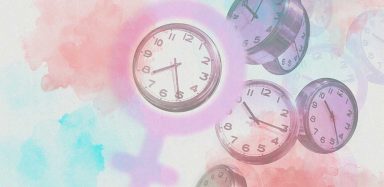Ovulation Pain Symptoms
If you have ever experienced ovulation, then you know it is not always easy to cope with ovulation pain symptoms. It can make easy tasks feel incredibly difficult, and if you are caught off guard, it can ruin your whole day.
Ovulation pain is not the same as menstrual pain, although people often use the terms interchangeably. Menstrual pain is the discomfort that comes along with the shedding of the uterine wall. This typically occurs just before or during your regular menstrual period.
While still painful and associated with your menstrual cycle, ovulation pain is the pain that happens at the time of ovulation. The pain results from the follicles growing and then bursting to allow the eggs to break through the ovary walls.
Ovulation pain can still feel very similar to menstrual pain. You may also experience cramping in the lower abdomen while ovulating, in addition to during your menstruation. However, you can generally differentiate between ovulation pain and menstrual pain based on the timing and specific symptoms.
Ovulation Symptoms
Specific symptoms help to differentiate between menstrual pain and ovulation pain. Everyone will experience their cycle differently, but the most common ovulation pain symptoms are:
- Pain in the lower abdomen.
- Pain associated with one side.
- Pain that switches sides, either regularly or periodically.
- Pain happens around two weeks before your expected period.
- Pain may last minutes or hours.
Roughly one in five people experience ovulation pain and discomfort. Each person will experience pain individually, and for this reason we may not all describe ovulation pain the same. For some, it may feel like excessive pressure in the areas near their hipbones. In others, it may feel like a sharp pain or cramping. The pain can be quick to come and last only minutes, or it may be gradually more painful and last for up to two days.
It may be helpful to keep track of your symptoms. For example, write down the dates that you feel pain. In your pain tracker, describe the sensation and level of discomfort that you feel. Include how long the pain lasts and if it disrupts your usual activities. This will help you better prepare yourself for your ovulation pain and equip you with valuable information to share with your health care provider.
Related Search Topics (Ads)
Managing Ovulation Pain
Managing your ovulation pain will look very similar to managing your menstrual pain. If you regularly suffer from ovulation pain, it will be helpful to be prepared for the pain and have everything you need on hand before you begin to ovulate.
Rest and Relaxation
Firstly, it is important to rest and take time for your body to heal and cope with the pain. Sleep is especially important if you feel like the pain is disrupting your day. Try to stay relaxed, if possible, when not resting.
Apply Heat
Apply heat to the area. A warm towel or heating pad can bring great relief when suffering from ovulation pain. A long, relaxing soak in a hot bath can also help ease the discomfort.
Medication
Take a pain reliever. Over-the-counter medication can help settle your discomfort and allow you to rest. For example, anti-inflammatory medication (NSAIDs), such as Advil or Aspirin, can reduce pain and pressure. Speak to your local pharmacist and see what they recommend. If you find that over-the-counter painkillers aren’t helpful, talk to your doctor about prescription solutions.
When to See a Doctor
As mentioned before, ovulation pain or discomfort can last up to two days. If your ovulation pain lasts longer than three days or is accompanied by other unusual menstrual symptoms, make an appointment to see your doctor.
If you are experiencing a great deal of pain regularly or the pain is intolerable, it is also recommended that you seek medical advice. Your family doctor may refer you to a gynecologist who specializes in ovulation pain.
Typically, ovulation pain isn't a cause for alarm as it results from your regular bodily functions. However, it can sometimes be associated with other symptoms. So, it is important to rule out any underlying medical conditions.
If you have spoken with your doctor to rule out a more serious issue and have found a routine that helps you cope, ovulation pain is generally quite manageable. Although it is painful, ovulation pain is not a bad sign. On the contrary, if you are someone who experiences ovulation pain and are considering family planning, the pain can become a helpful tool for tracking your ovulation and planning your family.

